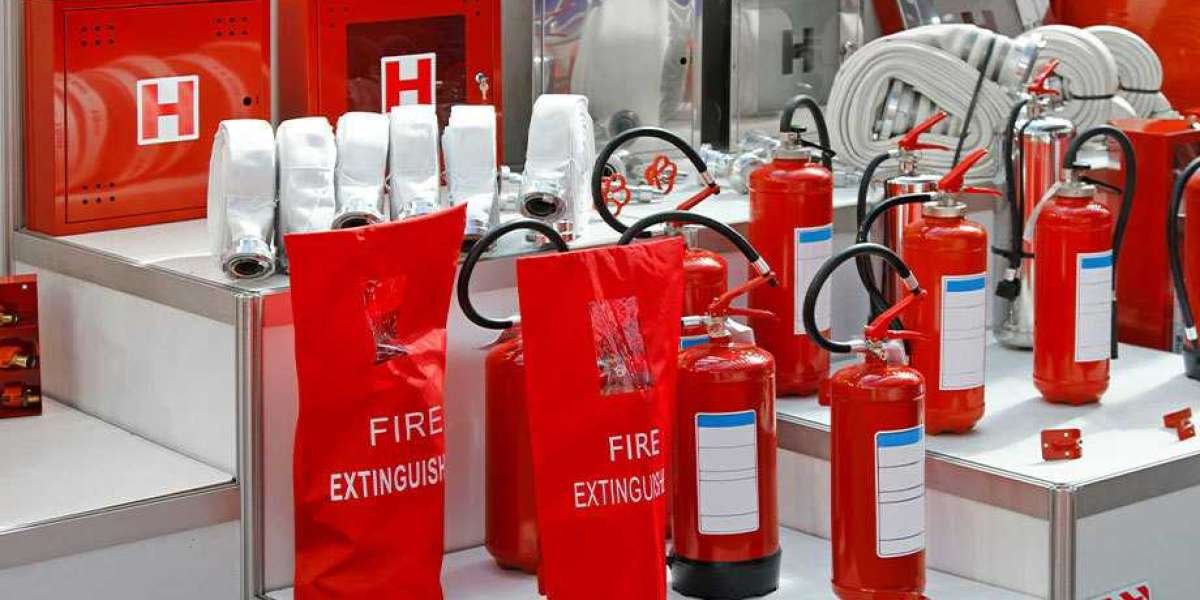Fire protection equipment is critical to ensuring the safety of individuals, protecting property, and preventing extensive damage in the event of a fire. Whether in residential, commercial, or industrial settings, fire protection equipment can significantly reduce the impact of fires by providing early detection, suppression, and the necessary tools to contain or extinguish flames. In this article, we will explore the various types of fire protection equipment, their functions, and their importance in fire safety.
1. Fire Extinguishers
Fire extinguishers are one of the most common and accessible fire protection tools. They are portable devices designed to put out small fires before they become dangerous. Fire extinguishers come in various classes, each designed to handle specific types of fires:
- Class A: For fires involving ordinary combustibles like paper, wood, or fabric.
- Class B: For fires involving flammable liquids like gasoline, oil, or grease.
- Class C: For electrical fires involving wiring, equipment, or appliances.
- Class D: For fires involving flammable metals like magnesium, titanium, or sodium.
- Class K: For kitchen fires involving oils and fats, commonly found in commercial kitchens.
Why they’re important: Fire extinguishers provide an immediate way to control or extinguish a fire in its early stages. They are easy to use and essential in every building, particularly in high-risk areas like kitchens, laboratories, and warehouses.
2. Fire Sprinkler Systems
Fire sprinkler systems are an automatic fire suppression system designed to detect and extinguish fires. When a fire is detected, sprinkler heads release water to suppress the fire's spread.
- Wet Pipe Sprinkler Systems: The most common type, where pipes are filled with water, and sprinklers are activated when heat triggers them.
- Dry Pipe Sprinkler Systems: Used in environments where freezing is a concern. The pipes are filled with air or nitrogen, and water is released when the sprinkler is activated.
- Pre-action Systems: A combination of dry and wet systems that require a two-step activation process to reduce the risk of false alarms.
- Deluge Systems: Often used in high-risk areas like chemical plants, where all sprinkler heads open simultaneously to release large amounts of water.
Why they’re important: Sprinkler systems are highly effective in containing and suppressing fires, often before they spread beyond a single area. They can be a lifesaver, especially when fire departments are still en route.
3. Fire Alarm Systems
Fire alarm systems are designed to alert building occupants of a fire, providing time to evacuate the premises and seek safety. A fire alarm system consists of a variety of components that work together to detect and notify individuals of fire hazards.
- Smoke Detectors: Detect smoke in the air, triggering the alarm. These are commonly used in residential, commercial, and industrial buildings.
- Heat Detectors: These detect rapid temperature changes and are often used in kitchens, storage areas, or locations with high humidity where smoke detectors may be less reliable.
- Manual Pull Stations: Allow individuals to manually trigger the alarm if they spot a fire or emergency.
- Strobe Lights and Horns: Used to alert people who are hearing-impaired, these devices provide visual and audible signals.
Why they’re important: Fire alarms provide an early warning of fire, enabling people to evacuate or take action before the fire becomes unmanageable. They are critical for saving lives and reducing the spread of fire.
4. Fire Blankets
Fire blankets are used to extinguish small fires or to protect individuals from fire hazards. Typically made of non-combustible materials like fiberglass or wool, fire blankets can be thrown over a small fire to smother the flames, cutting off the oxygen supply.
- Kitchen Fire Blankets: These are commonly used in commercial kitchens to quickly extinguish grease fires or other small fires that arise in cooking areas.
Why they’re important: Fire blankets are an essential tool for quickly controlling small fires, particularly in confined spaces. They are easy to use and are especially helpful in preventing kitchen fires from escalating.
5. Fire Hose Reels
A fire hose reel is a critical tool for fighting larger fires. It consists of a hose connected to a water supply, which can be used to direct water onto a fire. Hose reels are commonly found in commercial and industrial environments.
- Manual Fire Hose Reels: These require a person to manually unroll the hose and aim the nozzle at the fire.
- Automatic Hose Reels: Automatically deploy the hose when activated, allowing for quicker access during a fire emergency.
Why they’re important: Fire hose reels are essential for tackling larger fires that cannot be managed with a fire extinguisher. They provide a steady stream of water and are often used in buildings to control fires until the fire department arrives.
6. Fire Doors
Fire doors are specially designed to withstand high temperatures and help prevent the spread of fire and smoke throughout a building. Made from fire-resistant materials, these doors play a crucial role in compartmentalizing fires, containing them to a specific area, and allowing people to evacuate safely.
- Self-closing Fire Doors: These automatically close when the fire alarm is triggered, sealing off the area.
- Fire-rated Doors: Designed to withstand fire for a specific period (typically 30 to 60 minutes), allowing occupants enough time to evacuate.
Why they’re important: Fire doors are vital for maintaining fire containment in buildings. They protect exit routes, provide time for safe evacuation, and help minimize fire damage by preventing flames from spreading.
7. Fire Escape Ladders
Fire escape ladders are typically found in multi-story buildings and provide an emergency exit route for individuals in the event of a fire. These ladders are often portable and designed to be easily deployed from windows or balconies.
- Portable Ladders: Often used in residential or office settings.
- Built-in Ladders: Permanently installed on buildings as part of an overall fire escape plan.
Why they’re important: In the event of a fire, escape ladders provide a safe way for individuals to evacuate buildings when traditional escape routes are blocked by fire or smoke.
8. Fire Safety Signage
Fire safety signage plays a crucial role in guiding building occupants to safety during a fire emergency. Signs include exit routes, fire extinguisher locations, assembly points, and the locations of fire alarms or suppression equipment.
Why they’re important: Clear and visible signage ensures that individuals can quickly and safely navigate their way out of the building during an emergency. It also ensures that fire protection equipment is easily located when needed.
9. Fire Protection Systems Testing and Maintenance Tools
To ensure that fire protection equipment works when needed, it must be regularly tested and maintained. Maintenance tools include pressure gauges, testers for alarms and sprinklers, cleaning equipment for fire extinguishers, and software that tracks the status of fire systems.
Why they’re important: Regular maintenance ensures that fire protection equipment is functional and ready to operate in an emergency. Neglecting maintenance can lead to system failure when a fire occurs, putting lives and property at risk.
Conclusion
Fire protection equipment is vital for safeguarding lives and property against the dangers of fire. From fire extinguishers and sprinklers to alarms, blankets, and fire doors, each component plays an essential role in early detection, suppression, and containment of fires. Regular maintenance and employee training are critical to ensuring that these systems remain operational and effective. By investing in comprehensive fire protection, businesses and homeowners can reduce the risk of fire-related accidents and mitigate the devastating consequences of fire emergencies.













